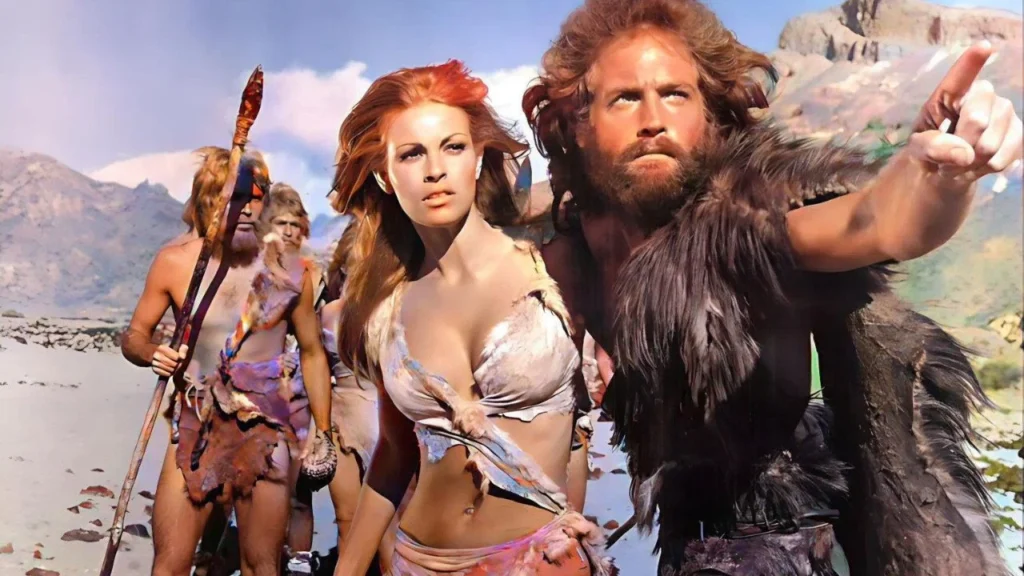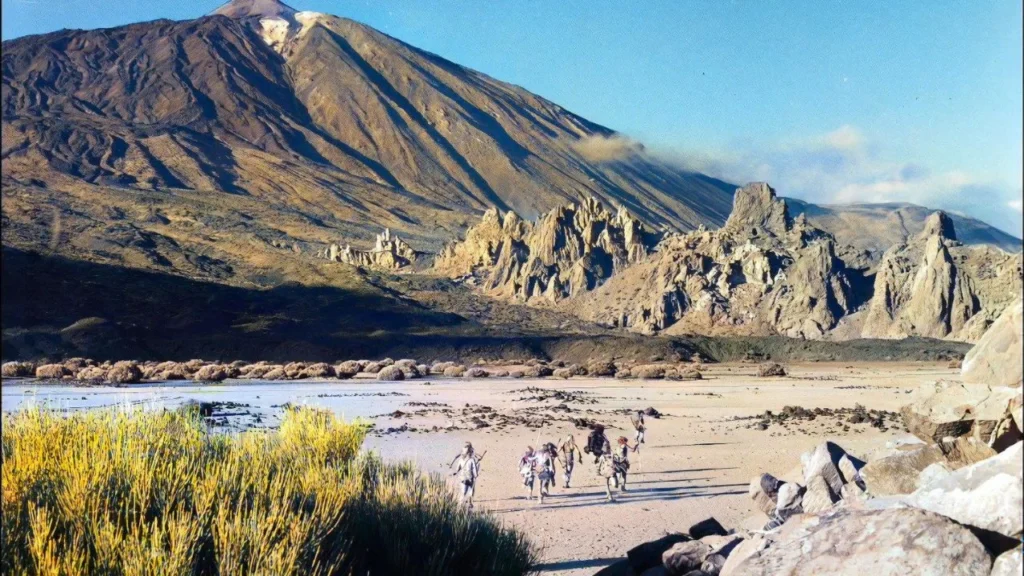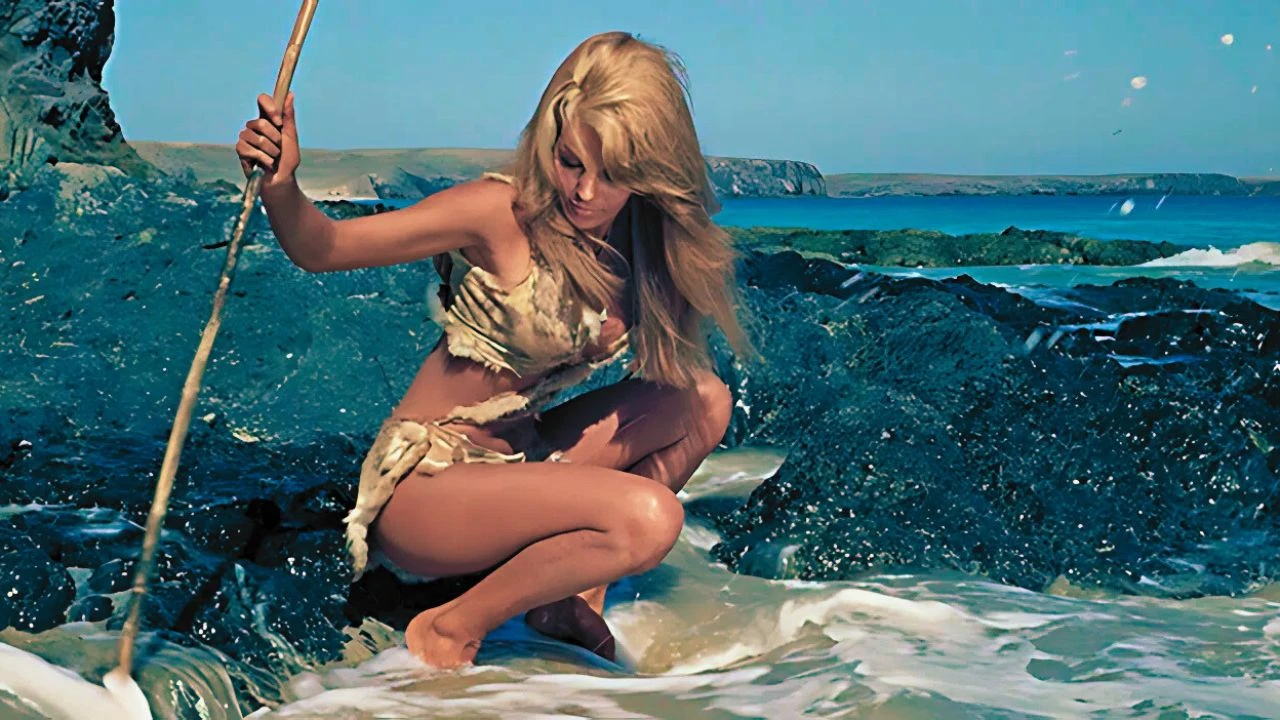One Million Years BC (1966) is a legendary adventure film that combines prehistoric fantasy with breathtaking visuals.
Directed by Don Chaffey and featuring iconic stop-motion effects by Ray Harryhausen, the movie tells the dramatic love story of two members from rival prehistoric clans.
They journey through wild and inhospitable lands, encountering dinosaurs, natural disasters, and dramatic landscapes along the way.
The film’s stunning locations brought its prehistoric setting to life. Let’s explore where One Million Years BC was filmed.
The Volcanic Landscapes of Lanzarote, Canary Islands

The volcanic island of Lanzarote in Spain’s Canary Islands served as the primary filming location. Its rugged terrain and otherworldly landscapes provided the perfect backdrop for this prehistoric tale. Key locations on Lanzarote featured in the film include:
Timanfaya National Park: This area, with its dramatic lava fields and volcanic craters, became the central setting for much of the film. The stark, blackened terrain created a sense of a wild and untamed prehistoric world.
El Golfo: Known for its unique green lagoon, this coastal area added an exotic and mysterious element to the film’s visuals.
Papagayo Beaches: These paradisiacal beaches brought a striking contrast to the otherwise harsh landscapes, offering a glimpse of untouched beauty.
Famara Beach: As the largest beach on the island, Famara provided sweeping sandy vistas that enhanced the scale and grandeur of the film’s setting.
Tenerife, Canary Islands

Additional scenes were filmed on the nearby island of Tenerife, another gem of the Canary Islands. Its volcanic origins and diverse landscapes further contributed to the movie’s prehistoric atmosphere.
Namib Desert, Namibia
For some of the most dramatic desert sequences, filming took place in the Namib Desert in Namibia. The desolate yet visually striking desert environment perfectly complemented the survivalist themes of the movie. Specific shots utilized the granite formations of Spitzkoppe, adding a raw and rugged touch to the film.
Studio Filming in Borehamwood, United Kingdom
While the majority of the movie relied on real-world locations, certain sequences and special effects were completed at the Associated British Picture Corporation studios in Borehamwood, England.
This included constructing miniature volcanoes and shooting scenes involving Ray Harryhausen’s legendary stop-motion creatures, such as giant turtles and pterodactyls.
The Legacy of the Film’s Locations
One Million Years BC stands out in cinematic history for its imaginative storytelling and groundbreaking special effects.
The work of Ray Harryhausen, combined with the striking natural beauty of the filming locations, brought an unprecedented level of realism to the prehistoric setting.
Lanzarote’s landscapes, in particular, became iconic, with the island’s volcanic terrains capturing the harsh beauty of a primordial Earth.
Whether it’s the stark lava fields of Timanfaya, the green waters of El Golfo, or the sweeping sands of Famara, the locations used in the film continue to captivate audiences, proving that the natural world can be as awe-inspiring as the fantasy worlds created on screen.


